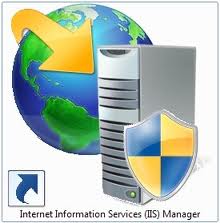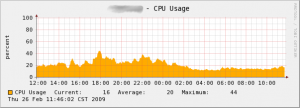Tag Archives: NerveCenter

Add Logic Before and After a Poll Executes NerveCenter Release 6.1 (“NC6.1”) includes new controls for how you can manipulate polls while they execute. This includes the ability to add logic before or after a poll executes. As well, you can have a poll start in the midst of a table instead of from the […]

How Much Polling is Enough? With more and more riding on a business’s ability to have its enterprise network perform at a high level, network managers continue to push the envelope in terms of polling frequency for network assets. Especially in larger, more complex networks, network operators are pressured to poll literally tens of […]

Simple Polling Doesn’t Give the Whole Story Polling for single objects and then applying a simple threshold or basic if/then logic to the resulting data is something many network monitoring tools can do. However, this doesn’t provide the complete picture of the true condition (or “state”) of the devices or services being managed. For network […]

Efficient Trap “Blasting” Techniques As network operators continue to rely on trap information to ensure they are effectively managing their networks, they are faced with increasing challenges as trap volumes continue to rise and the introduction of SNMP v3 traps brings in added complexity. In addition, some legacy tools focused on simple trap forwarding are […]

Many network monitoring solutions overload the NOC with redundant and insignificant network alerts. The volume of alerts can be overwhelming and create confusion of which alert to address first. Missing the priority can cause outages, user frustration or violation of SLAs. NerveCenter can reduce the alert storms and present operators with only actionable alerts. With […]

Many purchased and proprietary applications log activities and messages to flat files. These files can contain an overwhelming number of messages. Mining important logged messages from the flat file is necessary to identify specific messages about events of interest that are logged. In Unix / Linux environments, messages logged to flat files can be seen […]

Why is it important to monitor windows application? Windows applications affect: user experience productivity performance security What’s more, resolving application problems can be a drain on IT’s time and resources. If you’re running your business on an SQL server and it goes down, customers can’t buy your product. If you use Exchange and performance goes […]

Databases are critical to your business operations. They sit on top of your IT infrastructure and are interwoven with your applications. When issues arise in your IT Operations, it is important to isolate the root cause quickly. Is the issue in the infrastructure layer, with the applications, or within the databases? Monitoring all 3 in […]

VMware architecture can be set up using the vSphere client to attach to an ESX Server or using vCenter Server to manage a group of ESX Servers. An ESX Server can run multiple VMs. VMware Release 4.0 provides functionality for vSphere and vCenter Server to query performance statistics on ESX Servers and individual VMs directly […]

As the workforce in the United States continues to become more mobile through the use of remotely connected smart phones, tablets, and laptops there is an opportunity to leverage this “always connected” trend for network management. While social media is not always considered a tool for businesses, IT departments can utilize Facebook, Twitter, LinkedIn and […]
